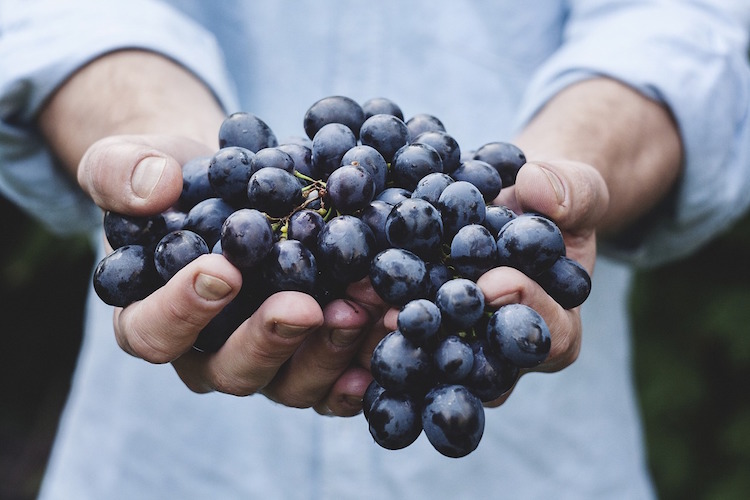Going on a raw food diet is said to have plenty of benefits to your health. Unfortunately, there are a lot of misconceptions that come along with the rave, such as you have to eliminate foods you like, which isn’t completely true.
Here are a few things you should know before going on a raw food diet.
You don’t have to eliminate any foods or food groups
A common misconception when it comes to raw food diets is that eating only raw food means you are no longer allowed to eat the foods you know and love. In reality, eating only raw food does not mean you need to, or should, cut any foods or food groups from your diet at all.
Sometimes we focus a little too much on the nutrients we are consuming and not nearly enough on the foods themselves. As you will see below, it is important that if you are going to consume only raw food, you do not stop eating certain foods or food groups just because you cannot cook them.
There are ways to prepare certain recipes in a way that involves putting ingredients together without heating, cooking or baking any of them. The good thing about this is that it will force you to choose fresher foods at the grocery store to cook with and will eliminate many of the processed foods you are probably more accustomed to eating, such as microwave dinners and baking cookies from a boxed mix.
If you are going to say goodbye to cooked food, it is pretty much a guarantee that you are going to have to learn to cook, and do it well and often. Check out these raw food recipes for inspiration and tips on how you can incorporate all foods, even your favorite desserts, into your raw diet.
You’re going to need to take supplements
The reason we eat food at all is for its nutrition, which at first glance probably seems like the most obvious statement you have ever heard. How much nutrition you get from foods, though, isn’t as simple as classifying foods into separate food groups.
Nutrition is chemical, which is important in understanding why some foods – and some food preparation methods – yield more nutrition than others.
Some websites will tell you that raw food is more nutritious than cooked food, which isn’t actually true. How much nutrition you get from a particular food is really all in the digestion, or rather, how much of the nutrients you consume are actually absorbed by your body.
That’s right: many nutrients go in one end and right out the other without providing any benefit to your body. This is a much more common occurrence when foods are eaten raw as opposed to consuming them cooked, baked or heated in some way.
In simple terms, applying heat to food breaks up certain compounds and makes them more digestible, meaning your body is much more likely to absorb them and use them to keep you healthy.
If you are planning on trying a raw food diet, especially if you have never tried one before, you are most likely going to have to take supplements to compensate for the nutrients your body is not absorbing. Choose vitamin supplements over supplements that promise “magic” results.
You’re going to have to get creative
Raw food diets are much more complicated than just cutting up fruits and vegetables or living off of juice and smoothies without ever picking up any kind of food preparation utensil. Your body not only needs all food groups to stay healthy, but a healthy balance between solid food and liquid nutrients as well.
If you are going to do this, you are going to have to go all in, which means you will have to not only search for raw food-friendly recipes online: you will have to transform your kitchen into a “non-cook” kitchen.
This is more than just not using your stove or microwave. You will probably want to invest in kitchen tools you might not have yet, such as a spiralizer, a food processor and a blender.
With these tools at your fingertips, you will be able to – and should at least try – to let your creativity fuel your food preparation. Vegetables can be sliced thin and turned into pasta noodles. Blenders can be used for more than just smoothies: you can make soups, dips, puddings, sauces and more.
Tips for your raw food journey
- Ask yourself why you are deciding to try a raw food diet. Make sure it is for the right reasons, because it won’t be easy, and if not done correctly can be more harmful to your health than you think.
- At first, you are going to probably consume more food than you are used to. This is normal. You are going from a diet rich in nutrients, many of them processed, to a diet free of processed food and lacking the ability to absorb as many nutrients as normal. Your body will have to adjust accordingly.
- Start small and start slow. In time you will learn how to prepare different, raw versions of the foods you love, but it can seem overwhelming at the start. Introduce one new preparation method or recipe at a time.
- Learn how to shop for healthy foods without spending all your money. It is possible. You don’t have to limit your shopping to only health food stores (most of their products are overpriced, anyway). If you need help shopping for healthy, organic foods, consider asking a certified nutrition professional for guidance.
- Educate yourself before you begin. Make sure you understand the pros and cons of going on a raw food diet. This might not be for everyone. Make sure it is feasible for you to try before you make the commitment, especially if you have a chronic illness that will prevent you from safely consuming a raw food diet only.
Consider these things before you take the plunge. If you can do it, great. If not, that’s okay too. If you try it and decide it’s not for you, there isn’t anything wrong with that. Listen to your body and make smart choices regardless of your diet.







